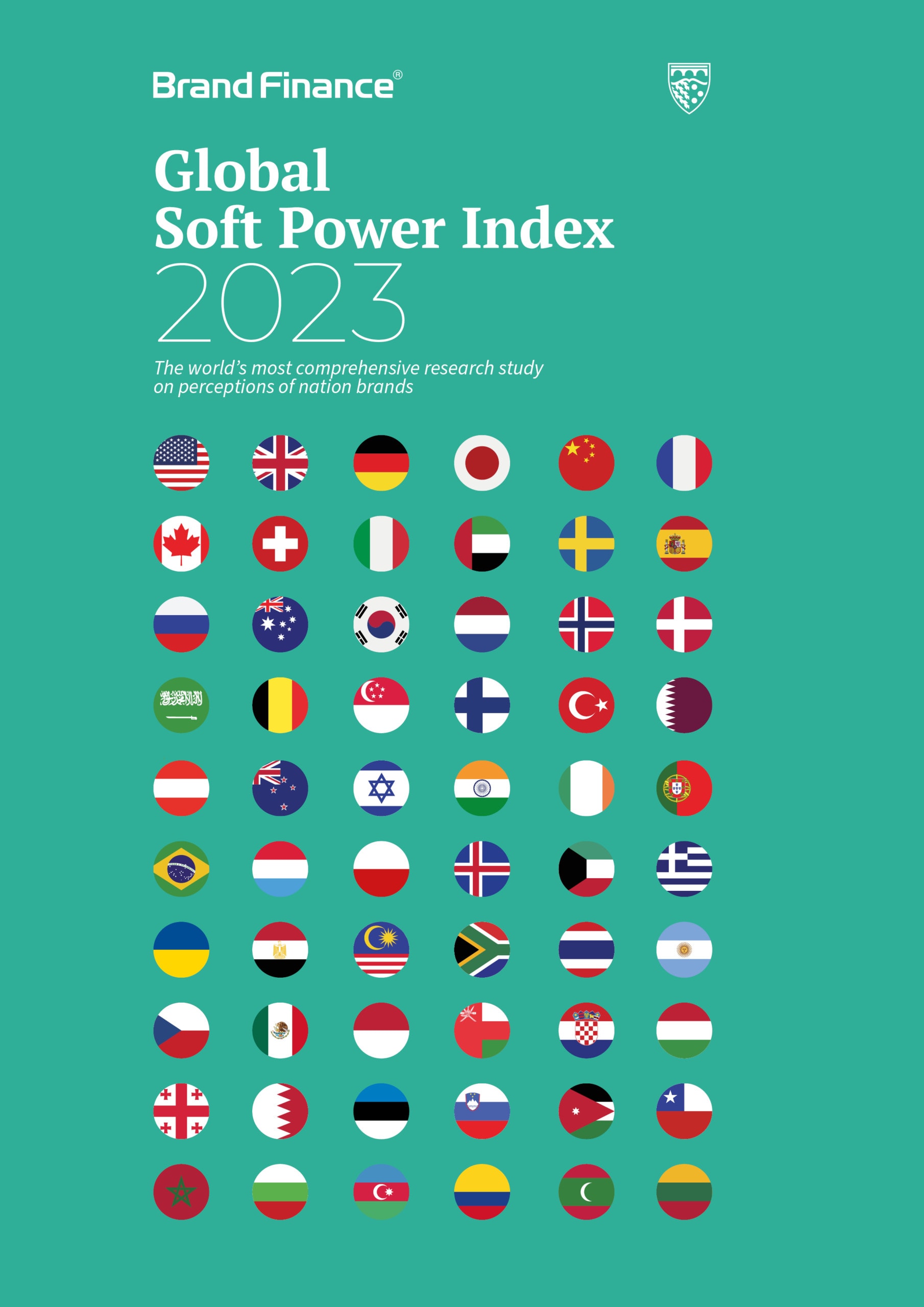This article was originally published in the Global Soft Power Index 2023.

Recent years have seen steadily increasing interest in the fields of nation branding, public diplomacy, and Soft Power. Whilst Soft Power flows – at implementation of nation branding and public diplomacy, the interplay between nation branding and public diplomacy remains somewhat elusive. For some, nation branding is a component of public diplomacy. For others, this view is inverted, with public diplomacy considered a component of nation branding. There is a rationale for both perspectives. However, when policy makers are contemplating developing a nation branding strategy it is important to avoid falling into the familiar, yet disappointingly still very prevalent, trap of treating nation branding as if it is no more than just advertising or logos.
When the first edition of my book, Nation Branding: Concepts, Issues, Practice was published in 2007, there was still considerable resistance within diplomatic circles to the concept of nation branding. A diplomat at the Washington DC embassy of a major Asian nation told me that he had been side-lined and rebuked for suggesting to the ambassador that their country should think about developing a nation branding strategy. ‘We are not salesmen for our country’, was the dismissive response to that proposal.
The world has moved on since then, and more and more countries have allocated resources to developing their nation brands. But the perception that nation branding is just about advertising and logos still persists amongst some audiences, often coupled with an instinctive aversion to the very idea of treating a country as a brand.
For some, the terms ‘brand’ and ‘branding’ carry connotations of manipulation and superficiality, with branding a practice unworthy of inflicting upon an entity such as a country. Such a perception is completely understandable when one looks at the unethical practices of some companies whose branding is designed to mislead rather than to inform, the proliferation of ‘greenwashing’ branding by companies worldwide a case in point. So what makes nation branding different from that kind of deceitful activity?
Done right, nation branding is not about selling an unrealistic image of a country or making exaggerated claims that cannot be backed up. Rather, nation branding seeks to narrow the identity-image gap that impacts on countries’ ability to attract investment, export their branded products, attract talent, promote tourism, and play a positive role on the world stage. This cannot be achieved by advertising and logos alone, although the power of advertising and logos should not be completely discounted.
It is widely accepted that advertising tends to play a much more important role in consumer-facing contexts such as tourism promotion than it does in the business-to-business domain, where relationship-building and personal contacts through events, such as trade missions and trade shows, come more to the fore.
Nation branding can certainly benefit by including good advertising and design, but nation branding is much more than that. It requires a comprehensive strategy, adequately funded and consistently supported by political and diplomatic policy makers. The nation brand and resultant Soft Power can be formed by a range of policies and actions that would not normally be considered ‘branding’.
In the case of the United States, which has invested consistently over decades in a strategic approach to public diplomacy, the US brand has been strengthened through education and cultural exchanges, journalism and broadcasting, and humanitarian interventions delivered through the US Agency for International Development (USAID).
Other countries have sought to enhance their Soft Power through nation branding strategies that highlight their country’s distinctiveness via gastronomy, music, and nature, as in the case of Brand Peru whose implementation and dissemination began in 2011 under the auspices of PROMPERÚ. Such approaches are more focused on reaching out to international audiences and making emotional and cultural connections rather than belching propaganda out into the world. So where to start when a country is seeking to develop its nation brand? What are the practical steps? Not commissioning an advertising campaign would be a good starting point.
Instead, the focus should be on bringing different stakeholders together to foster a sense of shared purpose with clearly defined goals. The advertising should come after the stakeholder engagement, not before. Several countries have successfully adopted an inclusive, stakeholder-based approach to their nation branding.
Some examples include Chile through the Fundación Imagen de Chile; Ireland through its ‘Food Brand Ireland’ strategy, bringing together farmers, growers, fishermen and food processors; and Sweden through the work of the Swedish Institute, often involving domestic stakeholders such as leading Swedish corporations IKEA, Volvo, H&M, and Spotify.
As more countries embrace the potential of nation branding to enhance their Soft Power, it will be interesting to see which countries will emerge in the coming years to challenge established countries such as the United States, the United Kingdom, and Germany at the top of the Global Soft Power Index.

